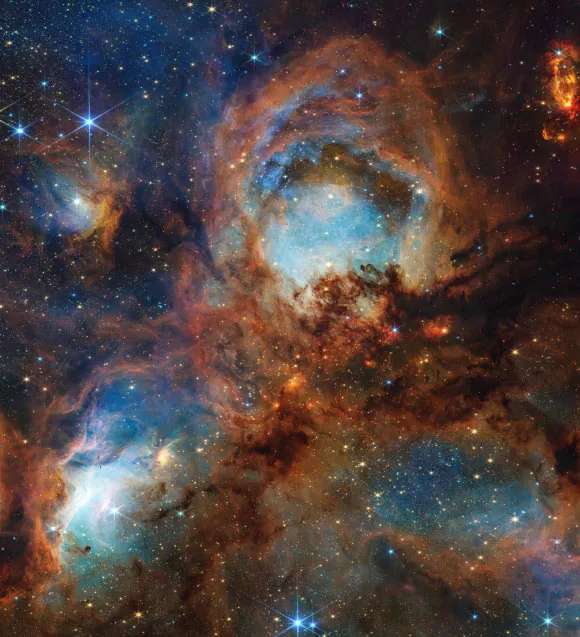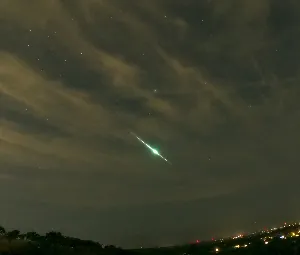
Webb Space Telescope Rings in Third Anniversary with Stunning Cat's Paw Nebula Snapshot
2025-07-11
Author: John Tan
As the James Webb Space Telescope celebrates its third anniversary, astronomers have unveiled a breathtaking image of the Cat's Paw Nebula, a vibrant star-forming region located about 5,500 light-years away in the southern constellation of Scorpius.
Originally discovered by the famed astronomer John Herschel in 1837, the Cat's Paw Nebula, also referred to as NGC 6334 or the Bear Claw Nebula, has a diameter of approximately 80 to 90 light-years. This cosmic nursery is home to thousands of young, luminous stars, many of which remain hidden from our view.
The new high-definition image produced by Webb's NIRCam instrument reveals intricate details and features of this stunning nebula, showcasing a majestic scene where massive young stars are actively sculpting their environment by pushing away gas and dust.
"The glowing blue hues you see represent the bright starlight illuminating this area, creating a temporary, dynamic environment where these energetic young stars exert a profound influence," scientists explained. "Although their lifespans are short relative to the timeline of the universe, their impact on star formation in the region is both significant and fleeting."
At the heart of the image lies the so-called 'Opera House,' noted for its unique circular structure. Below this area, astronomers detected a brilliant yellow star surrounded by a shell of material that it hasn't been able to disperse further away.
Sifting through the depths of the nebula, one can spot smaller, less populated areas marked by dark dust filaments harboring young stars—these regions are crucial for ongoing star formation yet remain obscured from plain sight.
Towards the center of the image, fiery red patches indicate active sites of star creation, while blue-white stars shimmer with clarity, their light intense enough to penetrate surrounding dust.
Highlighted in the upper right corner is a striking red-orange oval, suggesting a region ripe for new star development, accompanied by hints of energy-laden material being expelled from bright companions.
The image serves not only as a celebration of Webb's achievements but also as a reminder of the breathtaking complexity and beauty found in our universe, urging us to look deeper into the cosmic wonders awaiting discovery.



 Brasil (PT)
Brasil (PT)
 Canada (EN)
Canada (EN)
 Chile (ES)
Chile (ES)
 Česko (CS)
Česko (CS)
 대한민국 (KO)
대한민국 (KO)
 España (ES)
España (ES)
 France (FR)
France (FR)
 Hong Kong (EN)
Hong Kong (EN)
 Italia (IT)
Italia (IT)
 日本 (JA)
日本 (JA)
 Magyarország (HU)
Magyarország (HU)
 Norge (NO)
Norge (NO)
 Polska (PL)
Polska (PL)
 Schweiz (DE)
Schweiz (DE)
 Singapore (EN)
Singapore (EN)
 Sverige (SV)
Sverige (SV)
 Suomi (FI)
Suomi (FI)
 Türkiye (TR)
Türkiye (TR)
 الإمارات العربية المتحدة (AR)
الإمارات العربية المتحدة (AR)